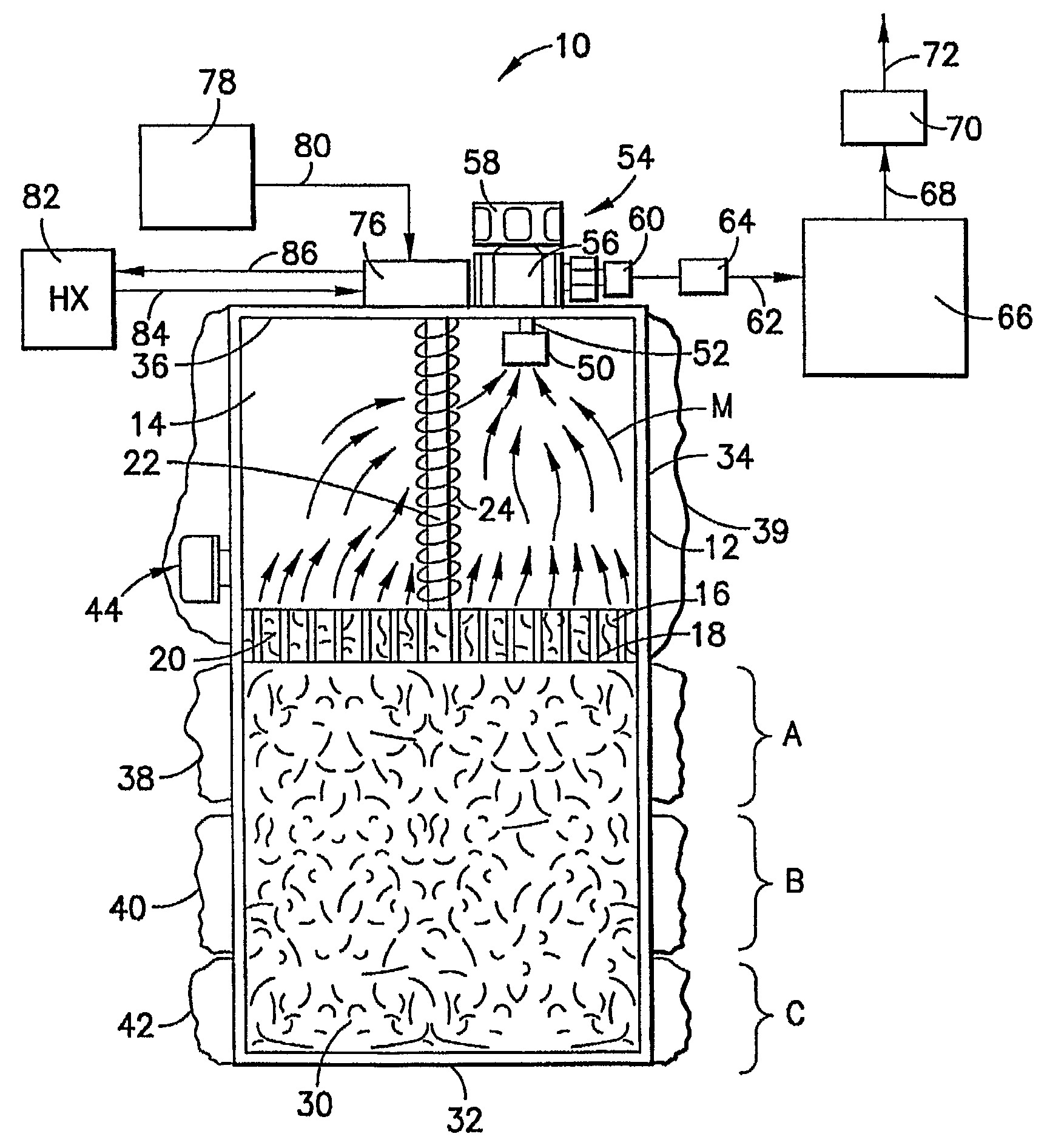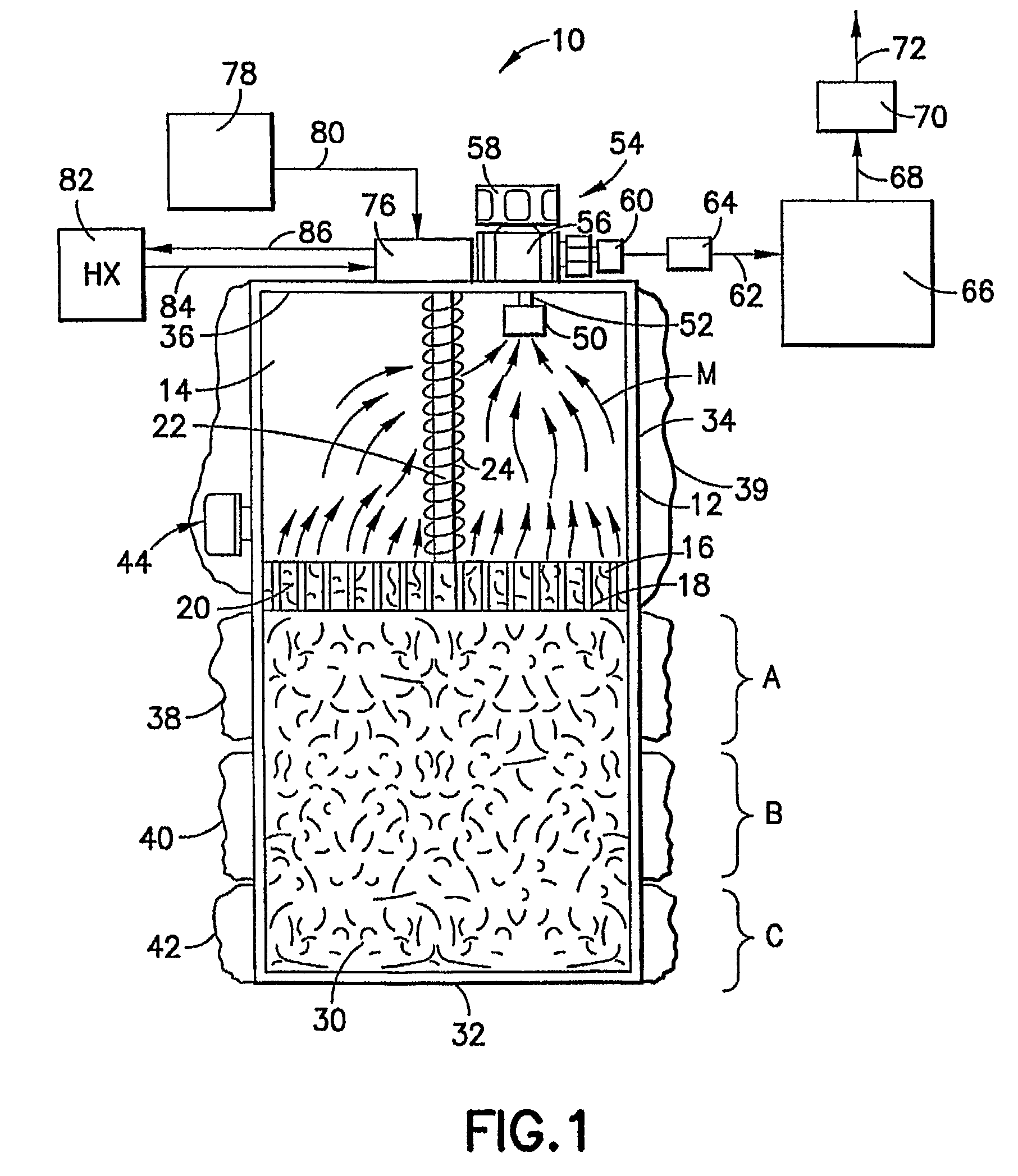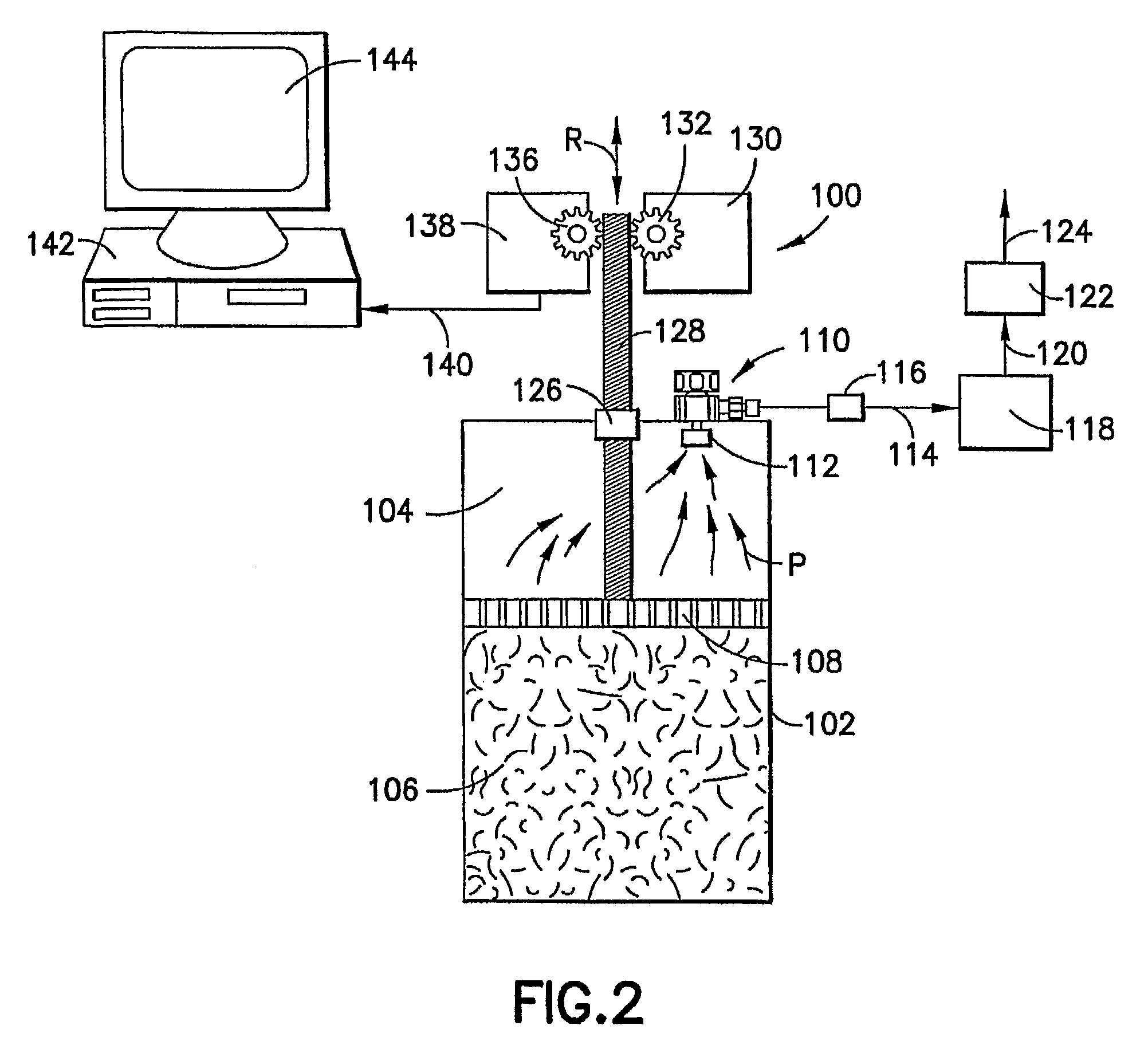System For Delivery Of Reagents From Solid Sources Thereof
a technology for reagents and solid sources, applied in the field of system for delivering reagents from solid sources, can solve the problems of difficult heating of solid sources, sudden bursts of vapor being emitted from solid sources, and the conventional approach to heating solid sources for such vapor generation suffers
- Summary
- Abstract
- Description
- Claims
- Application Information
AI Technical Summary
Benefits of technology
Problems solved by technology
Method used
Image
Examples
Embodiment Construction
[0059]The present invention relates to a system and process for delivery of reagents from solid sources thereof.
[0060]In a particular aspect, the invention is usefully employed for volatilization of solid source materials for semiconductor manufacturing, including solid sources such as decaborane, octadecaborane, indium chloride, and the like, which are usefully submitted to sublimation in consequence of their low melting points and significant vapor pressures.
[0061]In many instances, the low pressure production of vapor from solid source materials will require high conductance flow circuitry and components, so that the delivery rate of the volatilized reagent satisfactorily matches the needs of the downstream processing system utilizing such volatilized reagent. In this respect, a particularly useful high conductance flow control valve is shown in FIGS. 25-29 hereof, as described more fully hereinafter.
[0062]Referring now to the drawings, FIG. 1 is a schematic front elevation view ...
PUM
| Property | Measurement | Unit |
|---|---|---|
| temperature | aaaaa | aaaaa |
| temperature | aaaaa | aaaaa |
| pressure | aaaaa | aaaaa |
Abstract
Description
Claims
Application Information
 Login to View More
Login to View More - R&D
- Intellectual Property
- Life Sciences
- Materials
- Tech Scout
- Unparalleled Data Quality
- Higher Quality Content
- 60% Fewer Hallucinations
Browse by: Latest US Patents, China's latest patents, Technical Efficacy Thesaurus, Application Domain, Technology Topic, Popular Technical Reports.
© 2025 PatSnap. All rights reserved.Legal|Privacy policy|Modern Slavery Act Transparency Statement|Sitemap|About US| Contact US: help@patsnap.com



